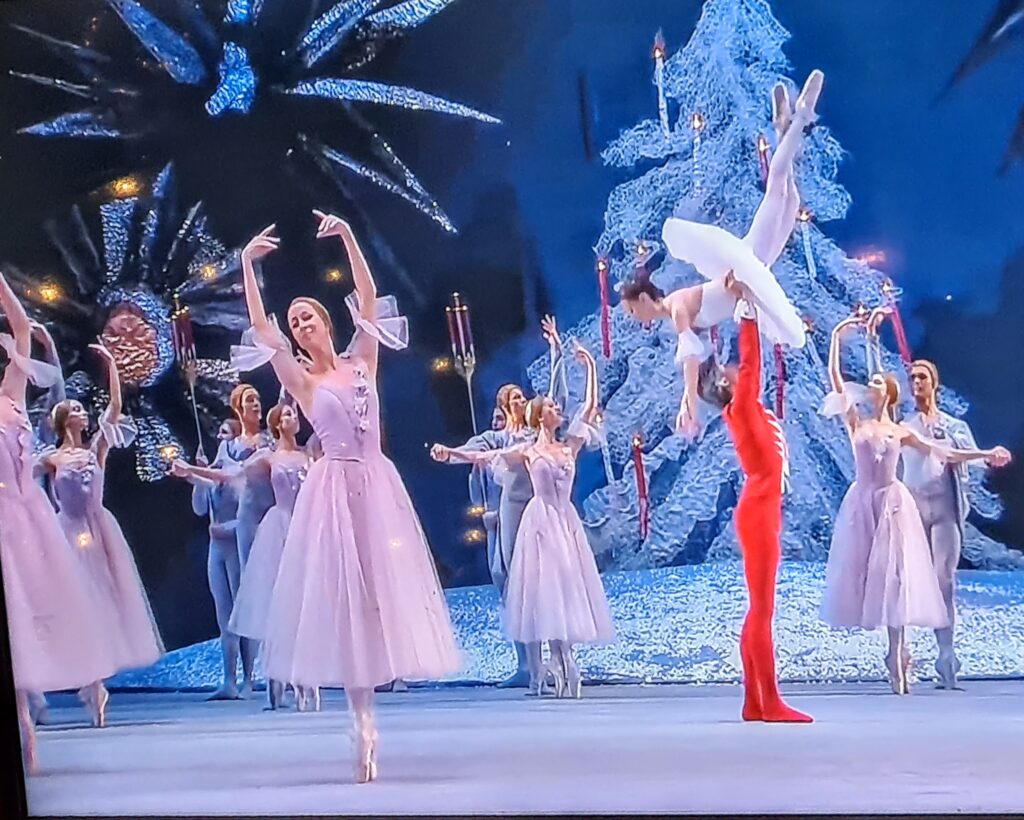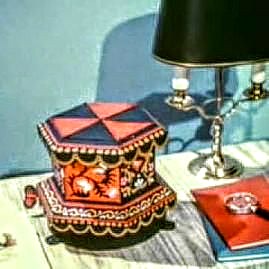“Here is a box, a musical box. Wound up and ready to play. But this box can hide a secret inside. Can you guess what it is in it today?” The lid, a hexagon comprised of six triangles in alternating colours, then slid back and up came the main character that was the star of today’s tale. If it was Windy Miller, you knew it was going to be a good episode. ‘Camberwick Green’ was a staple of my childhood along with Pogle’s Wood, The Woodentops, Andy Pandy and Pugh, Pugh, Barney, McGrew, Cuthbert, Dibble, Grubb (Trumpton). (There isn’t an English man or woman born in 1964 who wouldn’t be able to recite the remaining names if given ‘Pugh, Pugh…’.)

The later arrivals in my childhood television viewing were Mr. Ben the fancy dressing adventurer, Parsley the Lion and his fellow herbs (who gave all my children the password Herbidaceous for entry into any walled garden but particularly the one in the Bishop of Fulham’s Palace) and the Oliver Postgate masterpieces: Ivor the engine, Noggin the Nogg and the Clangers. His voice was the sound of my Sunday evenings and after school treats at five minutes to six when children’s programmes led into the serious grown up business of the 6 o’clock news on the BBC.
All these programmes were brilliant. They did not talk down to children (well, Andy Pandy did, but it was the oldest of the lot and still stuck in the 1950s) and they used adult vocabulary. Oliver Postgate in particular stressed the fundamental importance of using adult words to pique the curiosity of his viewers – a philosophy which worked. As I watch his episodes now with my little girl Emily I feel the delight in language he started when I hear his voice narrate The Clangers with words no contemporary children’s tv programme would dare to use.

And now I have been introduced to an entire world of parallel programmes that my wife grew up with during her childhood in the Soviet Union. Our daughter is now being reared on a combined bilingual diet of 1950-1970s children’s programming which, to us at least, exemplify the simplicity that a childhood should comprise. We do not hold with the knowing wink and a nod to adult audiences and ahead of their years American slickness and sexuality of modern Disney films. Nor do we like the artless computer generated animation and auto produced narrative soundtracks of cheap cartoons that seem to have flooded YouTube to date. We like the crafted skill, intelligent storyline and proper production values of the classics, most of which are available with English subtitles. Cheburashka , Hedgehog in the Mist, the 1950s Soviet version of the Snow Queen and Bambi (I know, we never thought of the Soviets sharing the same stories, but of course they did!). Just you wait! with a wolf and a hare in constant conflict (like Tom and Jerry but without the violence). Soviet Multiki are Russian cartoons, funny (judging by our daughter’s laughing reaction) and often very quaint and sweet.

It has been such a wonderful discovery to realise that there is a world of cultured, clever, inventive children’s programming out there beyond the Received Pronunciation of the BBC archive. We tend to pickle our childhoods in aspic and think no further than the horizons of our own glorious, forever golden youthful experiences to define what is good and what is not. A real blessing of being married to someone not from this country is the hammer blow it wields to shatter such misconceptions. I have discovered too many cultural treats to list here – thought they are covered in other blogs about Russia – but watching Tchaikovsky’s Nutcracker with Emily pirouetting around the room in homage and hearing her sing the culturally ingrained songs from my wife’s youth is a joy. Even I recognise many of them now: Gena’s song on the accordion from Cheburashka, Yolichka (New Year’s song) and Buratinas (Pinocchio to you and me).
For my part, I have introduced Tanya to The wind in the willows, which she loves. Secretly, this is my most important accomplishment – Russians are much better versed in English literature than we are in theirs. There isn’t a child brought up in Soviet life who does not smile at the memory of ‘Vinnie Pooh’ or Alice in Wonderland. Or Holmes and Watson. Or Dickens’ characters. Jerome K. Jerome’s Three men in a boat is universally loved and my wife can recite virtually the whole cannon of Kipling. So to introduce her to a book which has hitherto escaped her and the entire Soviet educational system’s attention is a rarity. And a joy. I had been looking forward to introducing my daughter to Ratty, Mole and Badger, but especially to Toad. However, Emily will have to wait. I am currently reading The wind in the willows every night to Tanya. The Edwardian language, descriptive, lyrical, slightly elaborate, transports her to a gentler age.
As we read, our sofa becomes a punt, moored in the reeds as the carpet river floats gently by. The fellow feeling she has with Ratty and the friendship with mole appeal to her sense of loyalty and communal good. My affinity with Toad’s excesses and love of the descriptions of riverbank picnics and roaring fires, allied to her appreciation of the language and the soft English countryside make every page a delight to share. So it has been the best Christmas present of all to find a book we both enjoy so much and to unwrap it page by page in front of her eyes, brand new and undiscovered. I am sure it is a present she will return to again and again. I hope so, anyway.
